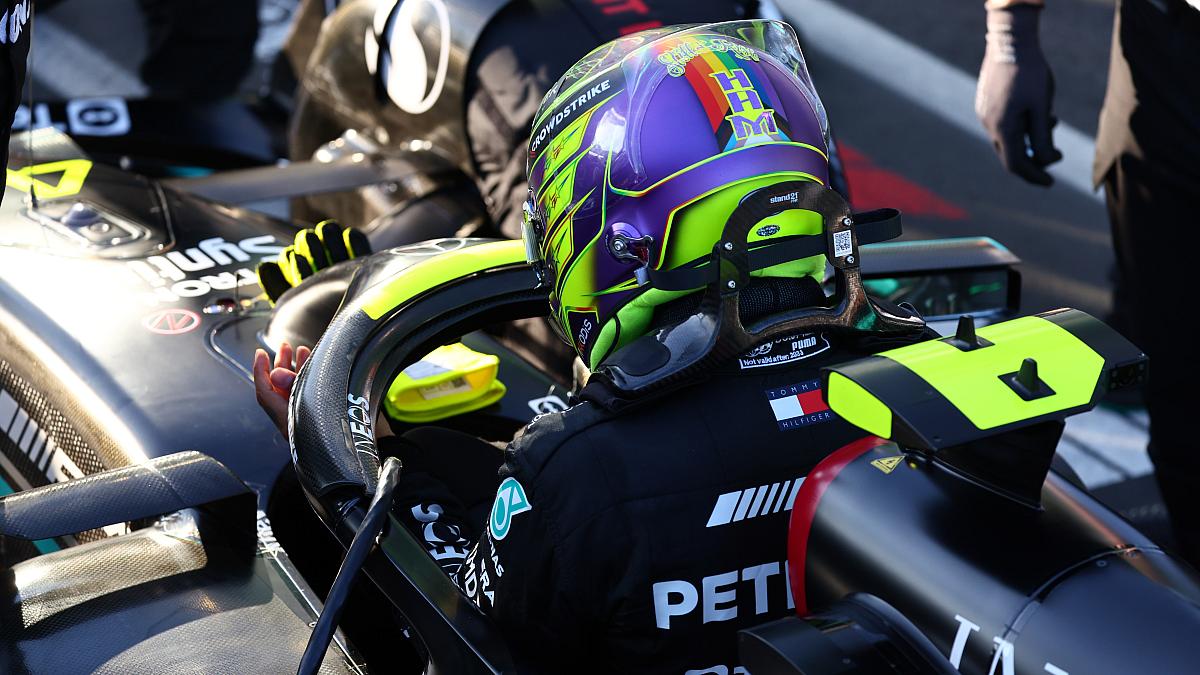Too close for comfort?
 Wéber Gábor
/
2023.04.13
Wéber Gábor
/
2023.04.13
Lewis Hamilton's comment in Melbourne about his seating position being closer to the front, which was confusing for him, stirred the imagination of many, and the topic has been on the agenda ever since. Grand Prix racing cars have featured all imaginable driver placements over the past hundred years, from the driver's seat placed near the rear axle due to the huge front engines to the racers of the ground effect turbo era of the 80s sitting almost on the front axle. But is there even an ideal driver's position inside a car, and what does a driver's comfort really depend on?
Despite the fact that each driver sits in their seat a little differently due to the structure of their car and their physical characteristics, the basic factors that primarily influence driving are the same. Just like the perfect physical condition, the comfortable seating position of the drivers can also bring important tenths of seconds per lap, especially over a full race distance. However, the seating position and the location occupied in the car are different things, and although both can have an impact on the driver's performance, basically the former is a much more important factor.
It's no coincidence that every season for the drivers starts with a seat fitting, during which they mould the new seat shell on the pilot, which of course is often refined even well into the first race weekends to create the most comfortable seating position possible within the framework of the given construction. Here, it is not only the position of the pedals and the steering wheel that must be considered, but also the proper support of the upper body and legs so that, together with the tightening of the six-point seat belts, the driver's freedom of movement is unrestricted and comfortable as possible in the already narrow chassis. Add to this the delicate interplay of crash helmets much larger than the human head, HANS and the mandatory FIA head protection, and we are now at the 3D puzzle in which every millimeter plays a role in terms of comfort.
In addition to the comfortable seating position, the view from the car is also important, but far less important, because in order not keep a low center of gravity and not to disrupt the air intake flow, most people do not go an inch higher than what they can see over the top of the monocoque. As a point of comparison, there are the front wheels anyway, which are the eternal reference points of all open wheel racers, although since 2022 the flow deflecting wheel wings have somewhat affected this.
A few driver mentioned this as a hindrance last year after the first test days, but during the year everyone quietly got used to it. Of course, these are not equally important for all competitors, but for those who are better off, it takes longer to adapt. Although the five-time world champion Juan Manuel Fangio was the almost unbeatable grandmaster of the 50s, he rather enjoyed himself in open-wheel racing cars. Although he also won races with a streamlined, close-wheeled version of the W196, he didn't really like not being able to see his front wheels. He ended the '54 British Grand Prix with bodywork dented all over in the continuous battle with the track limit defining oil drums, and that was the main reason of his kinda shortcomings in sports cars too. The same was the case with Michael Schumacher, who raced sports cars with the iconic Sauber C9, but created his real masterpiece in Formula 1, and no matter how many times he entered a closed-body car during the ROC (Race of Champions) competitions, he was usually beaten. By the way, he himself spoke about this at the time, how important the visual guidance of the steered wheels was to him.
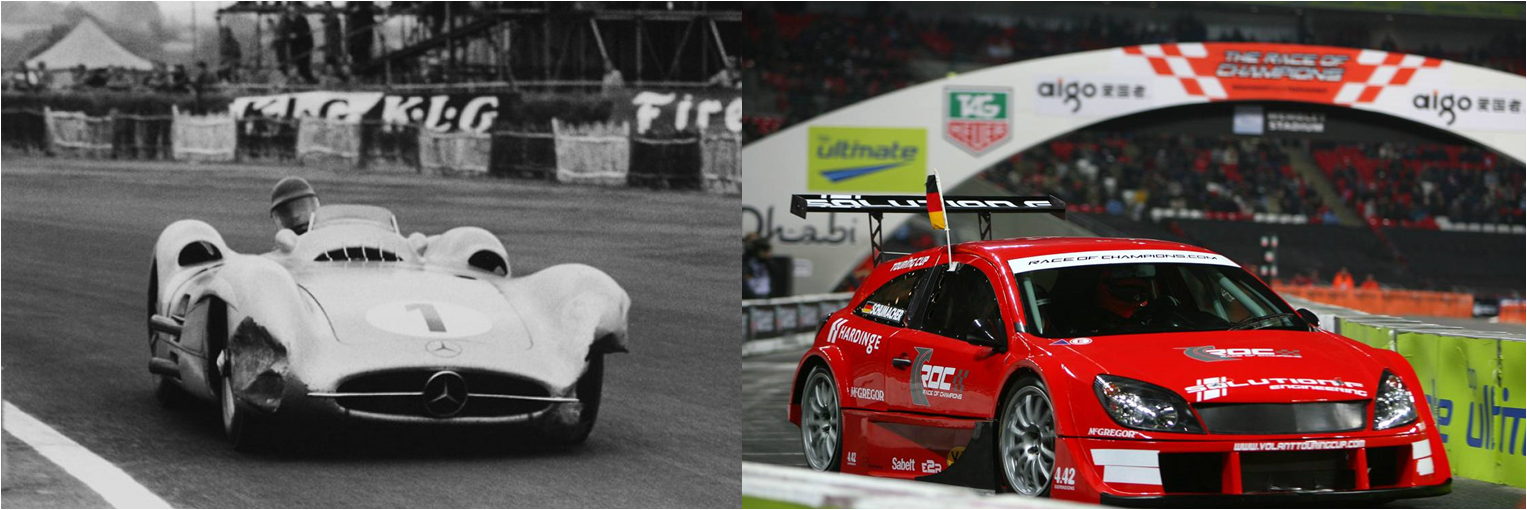
The design of the cars always depended on the current rules and the technological achievements of the time, and the placement of the drivers in the car changed based on these starting from the beginning of the 1900s. For a long time, the engines with huge cylinder capacity were located in the front of the car, so the competitors took their seats behind it. Although Auto Union already introduced the mid-engine concept in the 1930s, this construction method did not take over until 30 years later, so in the 1950s pilots drove almost sitting on the rear axle and with their backs completely straight. In the 60s due to the engines moving in front of the rear axle, the drivers were getting closer to the front wheels, but already lying on their backs in the bathtub-like monocoque. The proportions of the increasingly delicate cars changed significantly in the 70s when the fuel cell was placed behind the driver and a few years later with the design requirements of the ground effect era. Because of these, the monocoque was pushed more and more forward to clear the way for the airflow under the car into the Venturi tunnels.
The extreme forward driver's position was put to an end by the stricter safety regulations, which moved the pedal box behind the front axle, so more normal driver locations were restored. It has changed again from the 2010s onwards with the introduction of KERS and later the hybrid powertrain, and then due to ever expanding wheelbases for aerodynamic reasons. Because the 2022 rule change maximized the wheelbase of F1 cars at 3600 mm, the requirements of the new ground effect era reintroduced the slightly more forward positioned cockpits once again.
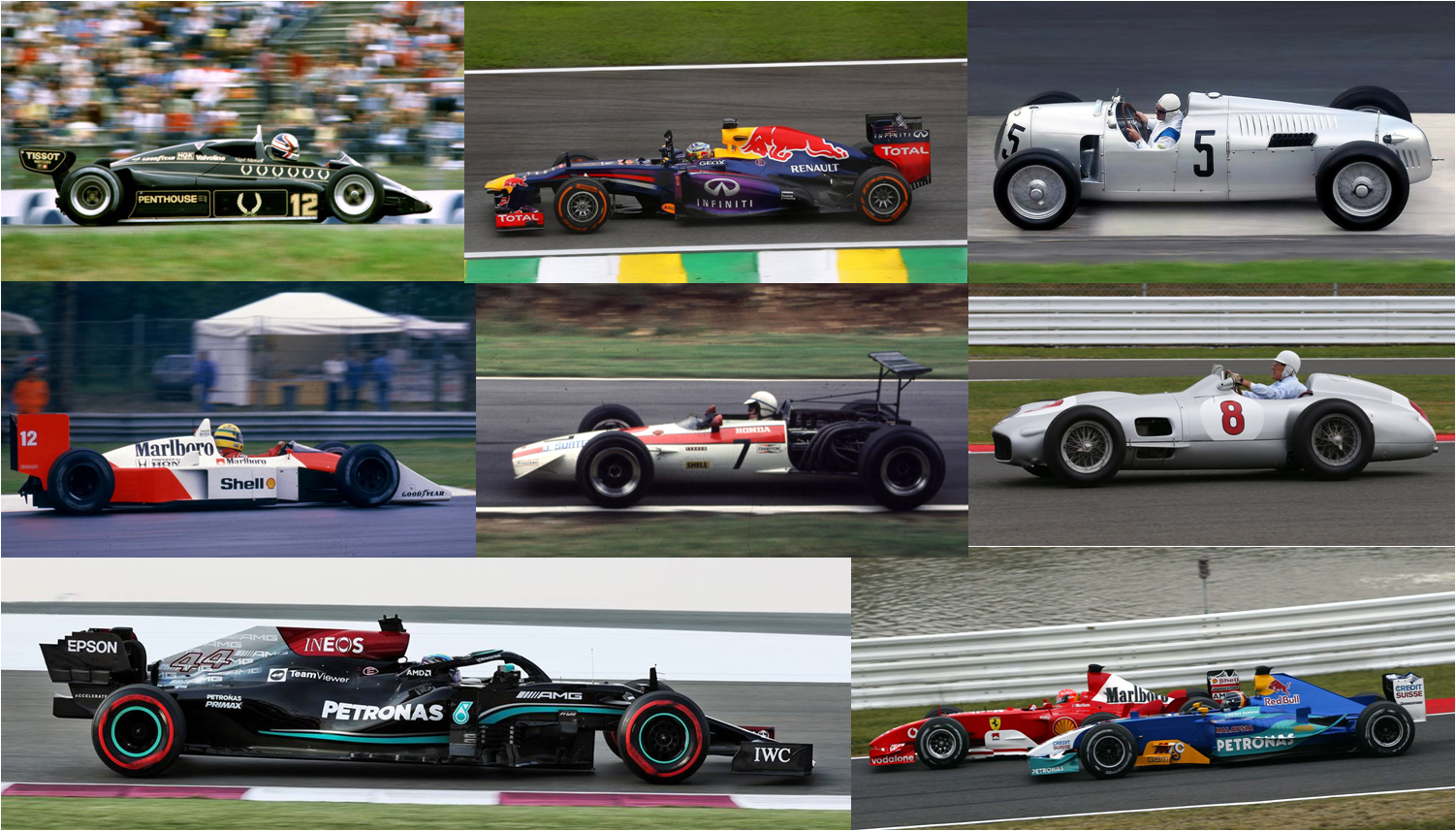
In relation to Hamilton's current statement, it is worth looking at how the design principles of the rulebook affect the driver's position in the car. The FIA's technical regulations precisely define the minimum dimensions of the survival cell, which were mainly written based on safety considerations. This includes not only the cross-section, the opening of the passenger cell and the placement of the roll bars, but also the pemitted location of the driver's helmet in terms of the longitudinal axis of the entire car.
An important limitation for the constructors is the narrow range of the car's weight distribution prescribed a few years ago, which in 2023 means a load of between 44.6-46.1% on the front axle, and by definition 53.9-55.4% of the total weight of the car, measured with the driver, on the rear axle. As mentioned above, the wheelbase has been maximized at 3600 mm since last year, which in some cases has pushed the location of the drivers slightly forward, towards the front wheels, depending on which design philosophy the team has chosen.
Mercedes, which used the longest wheelbase (3720 mm) in 2021, had to make particularly big changes for 2022 due to the zero sidepod design requirements. They moved the drivers closer to the front wheels by roughly 15 centimeters (~6 inches), while the wheelbase of the W13 was shortened by 12 centimeters (~5 inches). Due to the almost shaved off sidepods, they had to place most components centrally, in the center line of the car, and due to the mandatory shortened wheelbase, this was their best solution for gaining space. Of course, the forward biased seating location is not a necessary evil, since in the first half of the '80s mentioned earlier, the competitors sat even closer to the front wheels while driving 1200-1300 horsepower beasts.
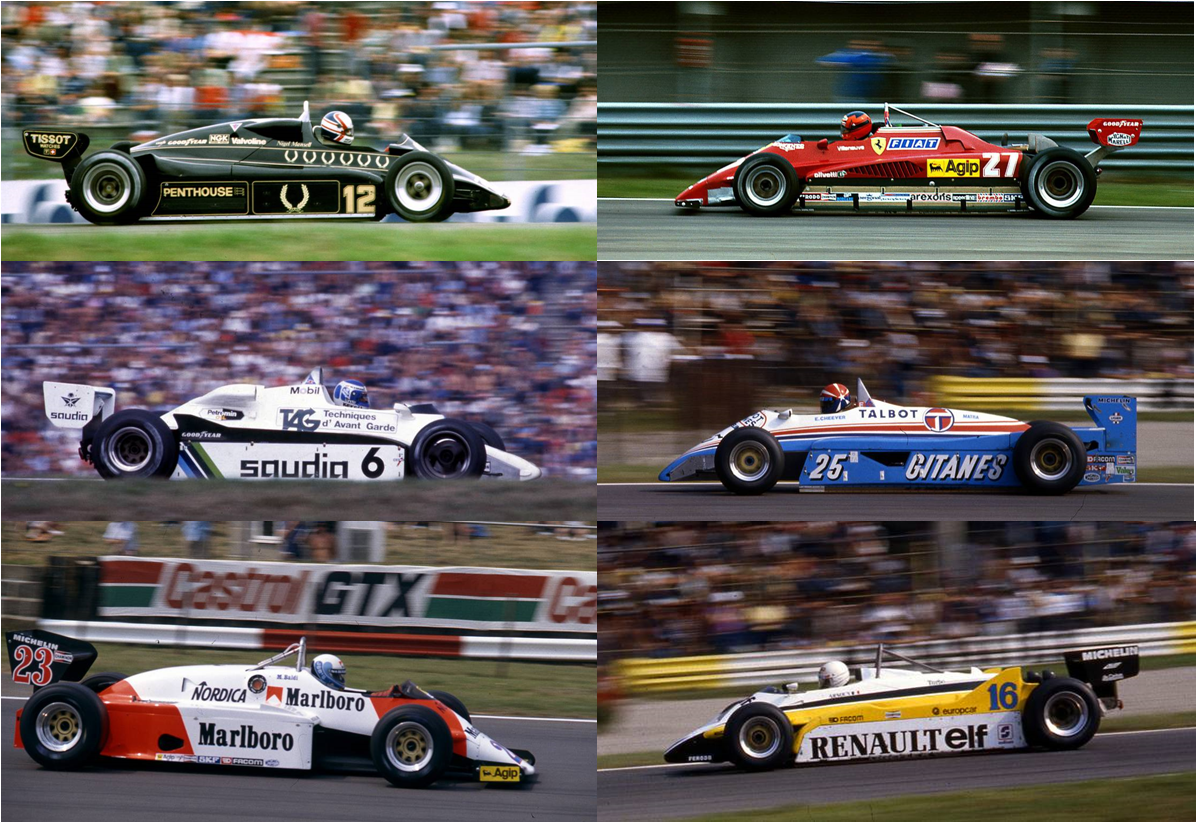
Since the development of the complex shapes of the underfloor, the increase of the underbody flow is key in this rule environment, therefore, from a design point of view, most things revolve around optimizing this. Therefore the engineering team led by Mike Elliott originally designed the first F1 Mercedes of the new era with this more forward driver placement, and the required center of mass (CoG) and weight distribution of the car were also calculated taking this into account. What is much more interesting is that Hamilton brought up the topic only now, into the third race of the 2023 season, while Mercedes' seat distance measured from the front axle has practically not changed since 2022. This is clear from the side view comparison of last year's W13 and this year's W14.
It’s self-evident looking at the wheelbase, the position of the halo and the air intake, which practically fall in line, just like the front planes of Hamilton's crash helmet. What has changed is the seating position, it is clearly higher for this year, Hamilton's helmet stands out much more from behind the rear plane of the halo and covers more of the air intake. Judging from the angle of his crash helmet, his body position is less prone than before, and his head is tilted forward more than last year. This could be a logical consequence of this year's modifications to the sidepods of the Mercedes, which took more space from the area around the driver, thus pushing the bottom and/or back wall of the cockpit a few centimeters higher.
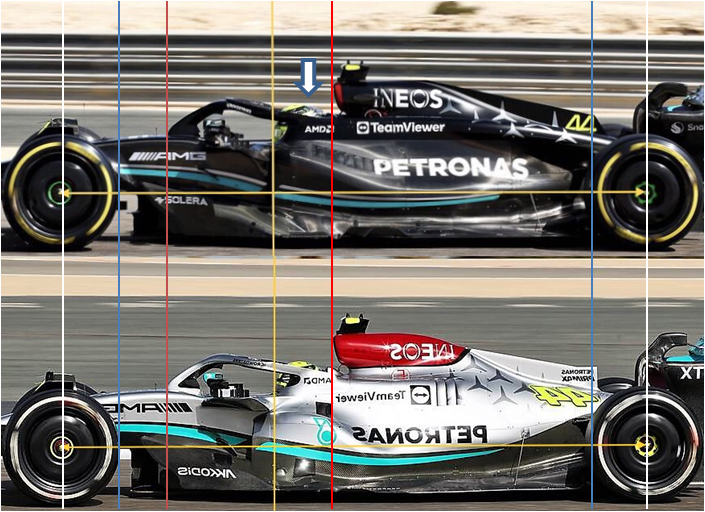
Based on my own racing experience, these vertical angle changes can sometimes be much more uncomfortable than expected, and this alone, rather than the proximity of the front wheels, may make it more difficult for Hamilton to blend in with this year's car. Because we are all sensitive to the natural position of the balance sensing center in our ears, we compare all spatial movements to this, and if we force ourselves into a position that is even slightly different from the usual one, it can affect the perfect perception, especially in a situation like driving a Formula 1 car on the limit.
Regardless, Hamilton's position and head posture in the car is not at all unique, as can be seen from the comparison of all ten cars in the field. Based on this, the drivers of Mercedes and Ferrari sit equally closest to the front axle, approximately 130 centimeters (~4’3 inches) from it. At the other end of the scale are McLaren and Red Bull, but the variances in the field are no different than what we would see in a randomly selected season due to the dissimilarities of the cars. The seating location difference between the two extremes is approximately 15 centimeters, less than 6 inches, that is not a game changer in any way.

Of course, like so many things, this is also a matter of perspective - in this case, even literally. However, what we see this time, is much more about the typical racing driver’s problem solving excercise, when you try to go through the variables that can affect your driving, while your belief in yourself remains unchanged. This is a completely normal way for the racing brain to methodically go through all the possibilities looking for a solution to the missing performance.
But would Hamilton’s complaint really be a legitimate argument in this case? In fact it isn’t, but as they say, above a certain level, most things are decided in the head.
Pictures: XPB Images
